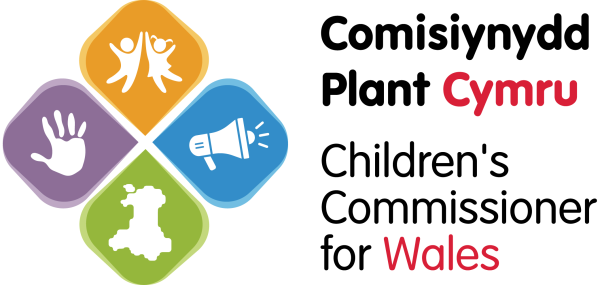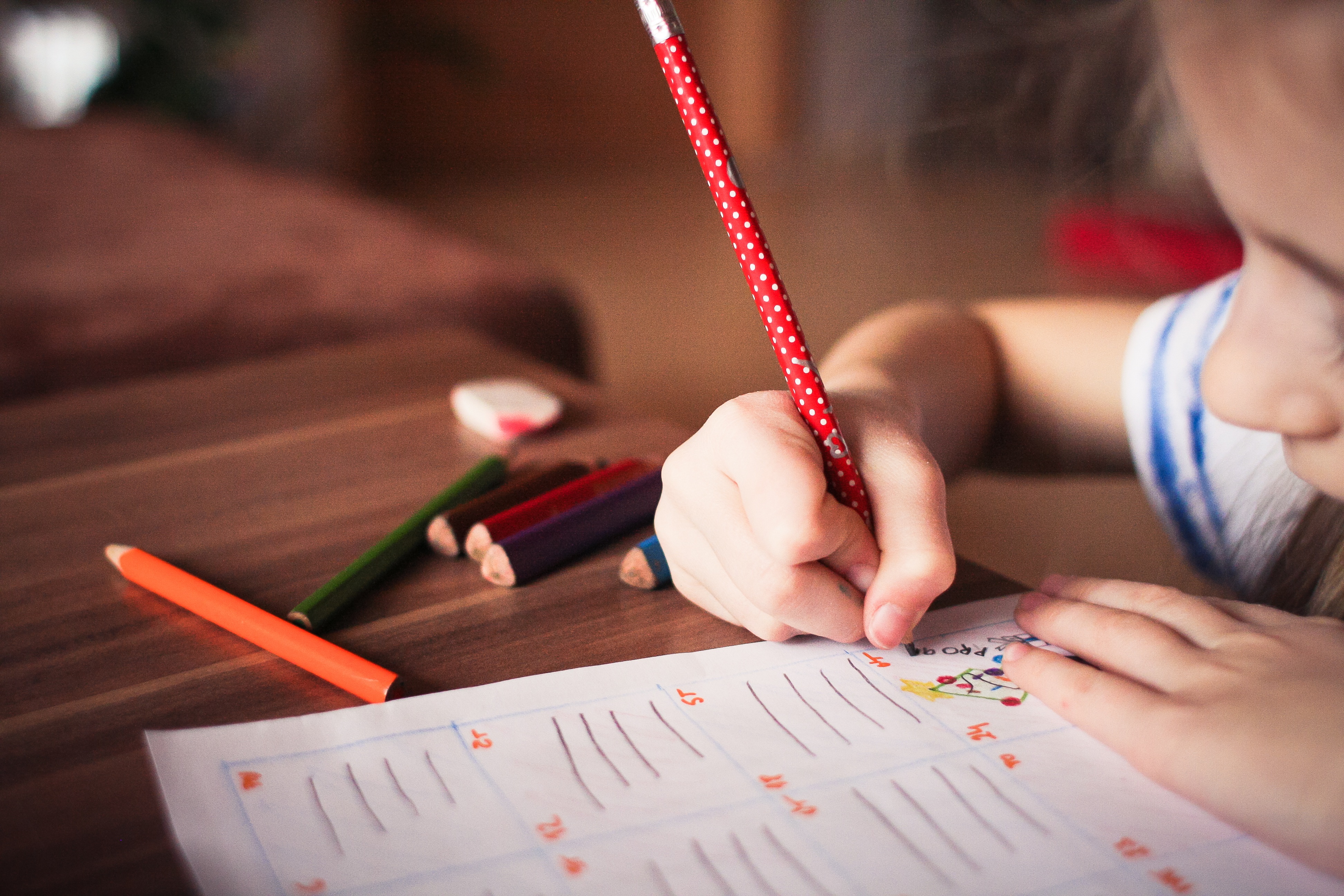Our mission/activity was available for school and community Ambassadors to complete between September and December 2021.
We held online training sessions for primary school Super Ambassadors with the Commissioner in October 2021. 6 sessions were in English, 2 in Welsh and 1 session was tailored for pupils with additional learning needs. Around 750 pupils from schools across Wales took part in the sessions.
We received 47 responses from primary schools, 2 from secondary schools and 2 from community groups. It’s likely that more took part without sharing their work with us. Autumn 2021 was a very challenging term for schools due to the ongoing Covid-19 challenges and it was encouraging that many schools found the space and time to enable their pupils to do this activity. The activity is still available for schools to use at any time here: Primary / Secondary
The mission/activity had three steps:
Step 1 – Use this template to think about how your school supports your wellbeing and to discuss any other ideas you have.
Step 2 – Arrange a meeting between Ambassadors and the school’s Senior Leadership Team and/or the school’s governors. CCfW shared some pre-prepared questions which pupils could use.
Step 3 – Create something to tell all pupils how your school supports their well-being and what more your school plans to do.
Summary of responses
How does your school already support your wellbeing? (Most common to least common)
- Exercise and sports (inc. bikeability, swimming lessons)
- Outdoor learning/Forest School
- Teacher/staff support
- Pupil groups/pupil voice
- Wellbeing lessons/learning (e.g. growth mindset, RSE, Jigsaw PSE, rights)
- Healthy eating
- Yoga/tai chi
- Quiet area/nurture area in school
- Visitors (inc. charities, play therapist, Police liaison officers, fitness instructors)
- School clubs
- Daily mile
- Mindfulness activities (e.g. colouring, meditation, affirmations)
- Play opportunities
- Celebrating days/occasions (Children in Need, St David’s Day, Anti bullying Week)
- Opportunities to talk about feelings (‘check ins’, circle time)
- Being with friends and team working
- Creativity and expressive arts (music, dawnsio gwerin, singing, art)
- Reading
- Worry box
- Therapy pets (dogs, chickens, guinea pigs)
- Rewards for good behaviour
- Classroom warmups (GoNoodle/Joe Wicks)
- ELSA/Thrive sessions
- School trips
- Lego therapy
- Collective worship/assemblies
- KiVa
- Regular wellbeing days (Wellbeing Wednesday/Happy Friday)
- Learning languages
- Buddy system
- Displays about wellbeing and rights
- Other – family engagement, non-smoking schools, Covid safety, recycling, woodworking, ‘staff buddies’ modelling kindness
What else could your school do to support your wellbeing? (Most common to least common)
- Calming and relaxation strategies (e.g. calm down room, meditation, therapy)
- Healthy food in school and cooking lessons
- More exercise (e.g. more equipment, daily mile, swimming lessons)
- More arts and languages
- Clubs run by teachers or pupil groups
- More whole school events and days
- Improve outside area
- Friendships
- Worry boxes
- Other – (more recycling, more teacher support, support with assessments, therapy dog)
What does wellbeing mean to you? (Examples below)
- “Keeping happy, healthy and safe”
- “Learning about ourselves”
- “When your whole body is healthy”
- “All aspects of your happiness and of your higher needs”
- “Positive growth mindset”
- “Living in a healthy way that is positive for you and others”
Methods
Schools approached the task in a number of different ways, some of which are below:
- Creating a corridor/class display showing how the school supports well-being
- Interviews with head teacher/SLT
- Interviews with governing body
- All classes had a lesson to discuss what well-being meant to them
- School council/Ambassadors work together to list how school supports well-being
- Homework task to fill in questions on well-being
- Leading an assembly
- Met with professionals from the local authority
- Joint working between pupil voice groups/committees across the school
Outcomes
Below are some of the outcomes of this mission/activity, which have been shared with us by schools:
- After speaking with Ambassadors, the SLT arranged a 6 week yoga course and mindfulness sessions for pupils
- Head teacher has spoken with governing body to introduce a wellbeing governor role
- Several schools said they are updating their website to include a page on wellbeing and how the school can support pupils
- Peer led drop-in sessions
- Started Wellbeing Wednesdays
- An audit of ‘safe spaces’ across school
- Introducing worry boxes
Case studies
| Primary school 1
The school council interviewed the head teacher and well-being lead teacher then every class spent a lesson on well-being. The school council then discussed what their school already does to support well-being and any new ideas they had. They created an action plan to improve their outdoor area and play equipment. |
| Primary school 2
Ambassadors and their link teacher created an action plan for their special mission. As well as making sure that consultation with all classes, the head teacher and the governor for well-being were included in the special mission, the Ambassadors conducted an audit of safe spaces across the school. |
| Primary school 3
This school has several well-being programmes at their school (Lego therapy, ELSA, Worry Wizard) and extend their ethos into the community through their family engagement – holding coffee mornings, walking clubs and Dads Group. |
| Primary school 4
The school has equivalent to one full day dedicated to well-being activities each week, linked to the 5 ‘wells’ of well-being (emotional/physical/spiritual/humility/creative well-being). In a survey with pupils, well-being lessons were shown to be popular. Pupils also spend a lot of time in the outdoors, through outdoor lessons, tai chi/yoga, team building activities, den building and relaxing in the woods. |
| Primary school 5
This school has a whole school approach to learning new skills and have an afternoon learning a new skill each week. School staff also have a ‘staff buddy’ system to model kindness and checking in on each other. |
| Secondary school 1
Peer mentors in school hold lunchtime sessions for Year 7 pupils, where they will be taught about wellbeing and relationships including how to be a good friend. The school’s Well-being Committee will be using questionnaires during form time to find out from pupils how they can help. The school also have several dedicated spaces with dedicated members of staff where pupils can go if they’re feeling worried or upset. |
| Secondary school 2
Wellbeing Ambassadors received training from a mental health charity, they then created and distributed a wellbeing survey for other pupils in the school. The wellbeing ambassadors presented their findings and shared ideas to further promote pupil wellbeing within their school. |
Mission/activity feedback
“They are really enjoying the work and being involved.”
“Our School Ambassadors thoroughly enjoyed participating in their first mission.”
“As always, thank you for the fantastic opportunity to support our children in focusing on key rights and giving them a platform and voice to share their views.”
“Diolch am bob dim rydych chi’n gwneud i ni.”
“Thank you for such a wonderful mission, we can’t wait for the next one!”

